

Matt Campbell
2025 Porsche 911 Carrera T review
6 Days Ago
This final iteration of Megane R.S. can still put a broad smile on even the most discerning enthusiast – and for that it's a Hall of Famer.
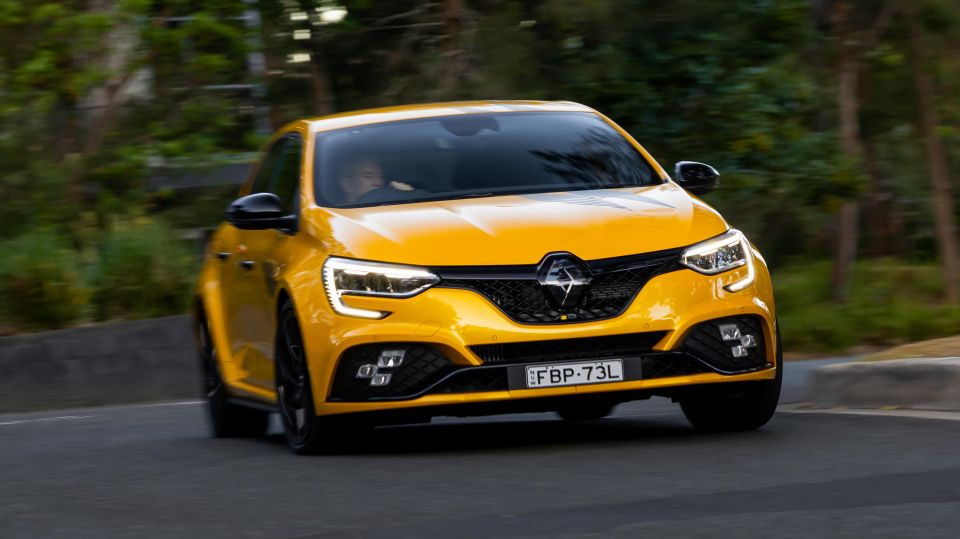
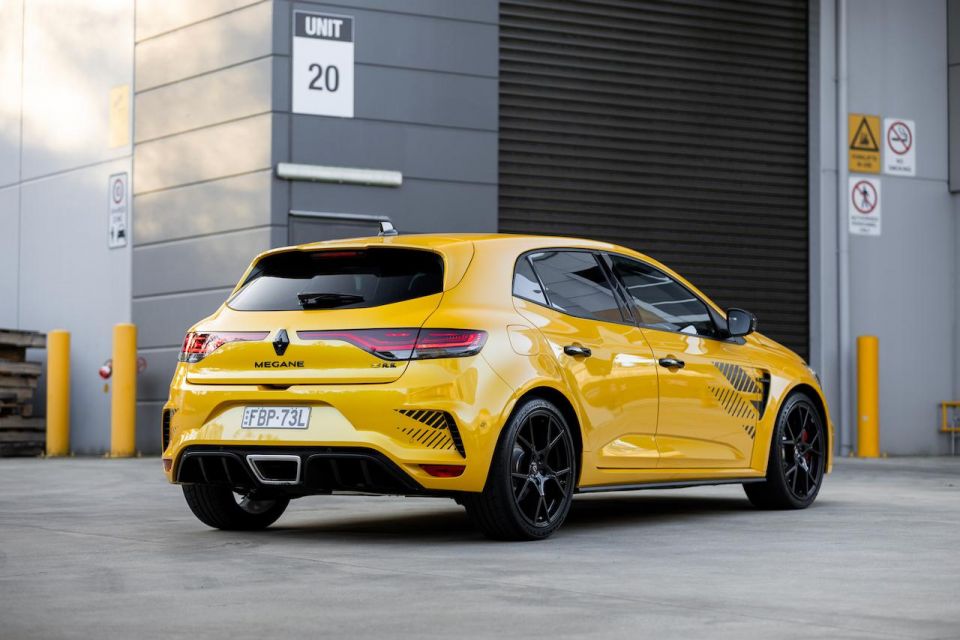

Senior Road Tester

Senior Road Tester


Senior Road Tester

Senior Road Tester
Where expert car reviews meet expert car buying – CarExpert gives you trusted advice, personalised service and real savings on your next new car.
The world might seem like a surreal place to car enthusiasts at large, especially when you’re behind the wheel of a car like the Renault Megane R.S. Ultime – the very last in a line of some of the most revered hot hatches ever built by the famed Renault Sport division.

In days gone by on three-way comparisons in the challenging Victorian high country where I favoured the Megane RS280 and its cat-like four-wheel steering over the likes of more powerful rivals like the Ford Focus RS and Honda Civic Type R, at least in the damp conditions that prevailed on that particular occasion.
Sadly, it’s all come to something of a ceremonial end, as Alpine once again picks up the reins amidst its transition into an all-electric performance vehicle division.
There’s a bunch of electric cars on the way including a high-performance version of the Renault 5 E-Tech, dubbed A290 (as per the concept), which is expected to feature the powertrain from the Megane E-Tech and looks special from the pics we’ve seen so far.
But the new EV version of Alpine doesn’t officially launch until 2025, and we’re not sure when cars will lob in Australia. In the meantime there’s just 1976 examples of the Megane R.S. Ultime available worldwide, in recognition of the year Renault Sport was first established.
Of that production run, only 40 were earmarked for Aussie buyers who won’t mind paying a premium for the privilege of owning the crowning glory of one of the most celebrated B-road heroes of the last two decades. At the time of publish, just four are still available.
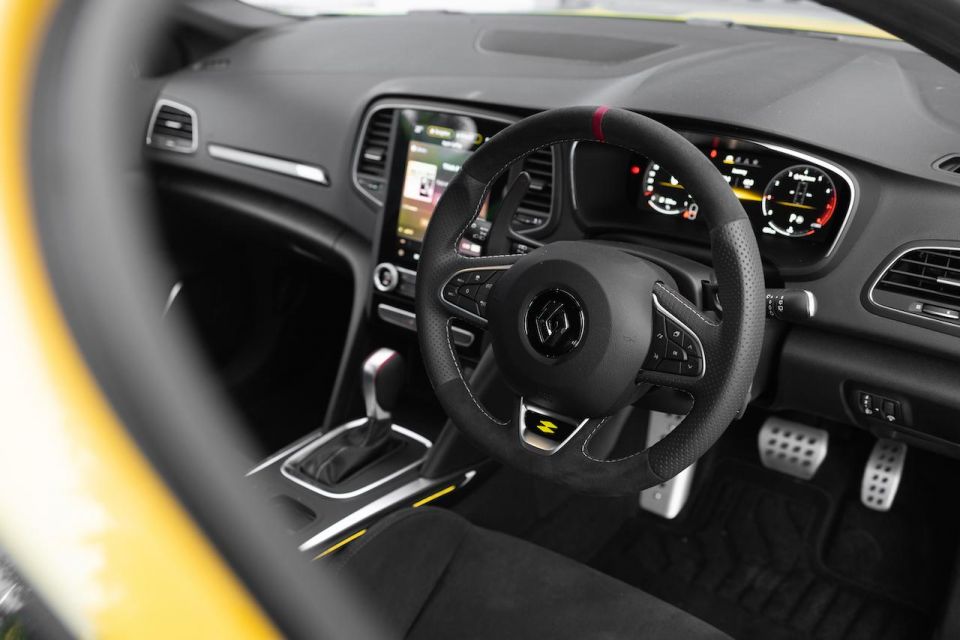
You’re unlikely to miss it on the road, especially in our tester’s Liquid Yellow paint job. There are three other equally satisfying colours available, along with a few other unique additions to the usual R.S. formula.
The Megane R.S. has always been an impressive looker with its beefed-up guards, black wheels and F1-style front splitter, again in gloss black. But the R.S. Ultime makes even more of a statement.
There are the matte black ‘broken’ stripes adorning the roof, bonnet, rear bumper, doors and all four guards. The year Renault Sport was established – 1976 – is very faintly inscribed in the stripes on the driver’s side, too.
The black-accent theme continues with the logos, door handles, window frames, wheels, front and rear bumper vents, as well as the front bumper’s Formula 1 blade. It looks special, as well as purposeful.
You also get a few extra goodies above and beyond the standard R.S.Trophy, including lightweight wheels, special Bridgestone tyres, Recaro buckets in Alcantara, and a build plate.
Just 40 examples of the Renault Megane R.S. Ultime were allocated for Australia, priced from $67,500 before on-road costs for the six-speed manual transmission and $70,500 before on-roads for the six-speed dual-clutch automatic – a $4500 premium over the regular R.S. Trophy.
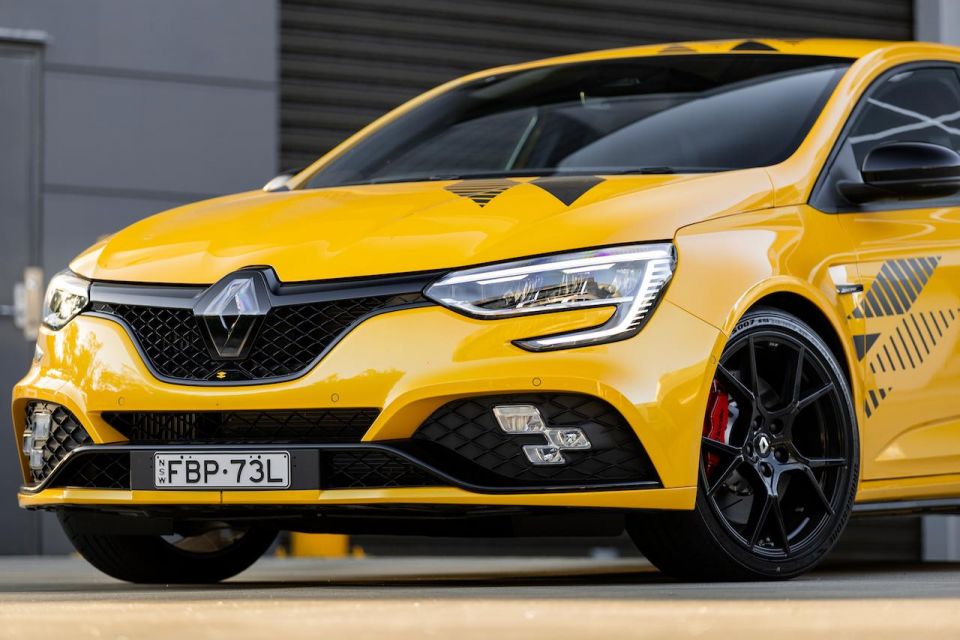
At the time of publish, just four are left with dealers. While icon status and genuine limited-edition rarity count for plenty, competition in the hot-hatch arena has also produced some exceptional rivals with less expensive price tags.
Most notable is the Honda Civic Type R only with manual transmission from $72,600 drive away, as well as a number of variants of the full-fat Hyundai i30 N (starts from $46,200 for the manual), but especially the i30 Sedan N with its more dynamic chassis.
Toyota has its great looking GR Corolla with AWD from $64,190 plus on-roads and the smaller GR Yaris priced at $51,390 excluding on-roads.
Renault Megane R.S. Ultime pricing:
Prices exclude on-road costs
One glance at those fully-wrapped Alcantara Recaro buckets and you know you’re in a hardcore hot hatch from Renault Sport.
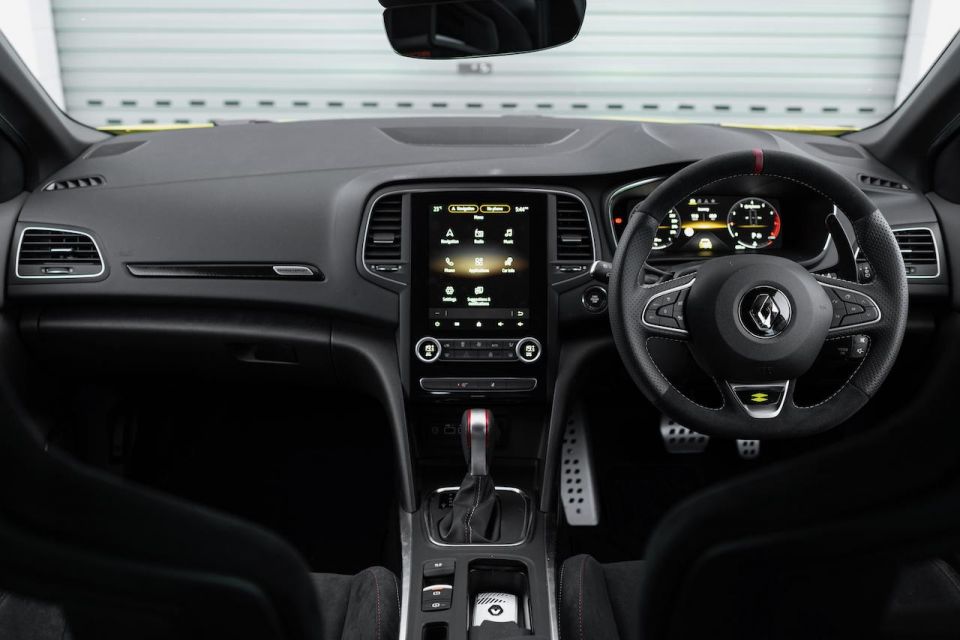
These pews have been designed with some of the most aggressive bolsters you’re likely to find in a street car before going to a full-tilt racing seat.
They’re also finished with twin-stitching in red/white, while ‘R.S.’ and ‘Recaro’ are beautifully embroidered into the seat backs in Vivid Red.
It’s the same story in the second row – properly bolstered outer seats in the same soft Alcantara fabric with double- twin-stitching in red, as well as the seat belts all round.
There’s the obligatory Liquid Yellow accents tastefully displayed in strips on the front door cards and centre console for heritage effect.

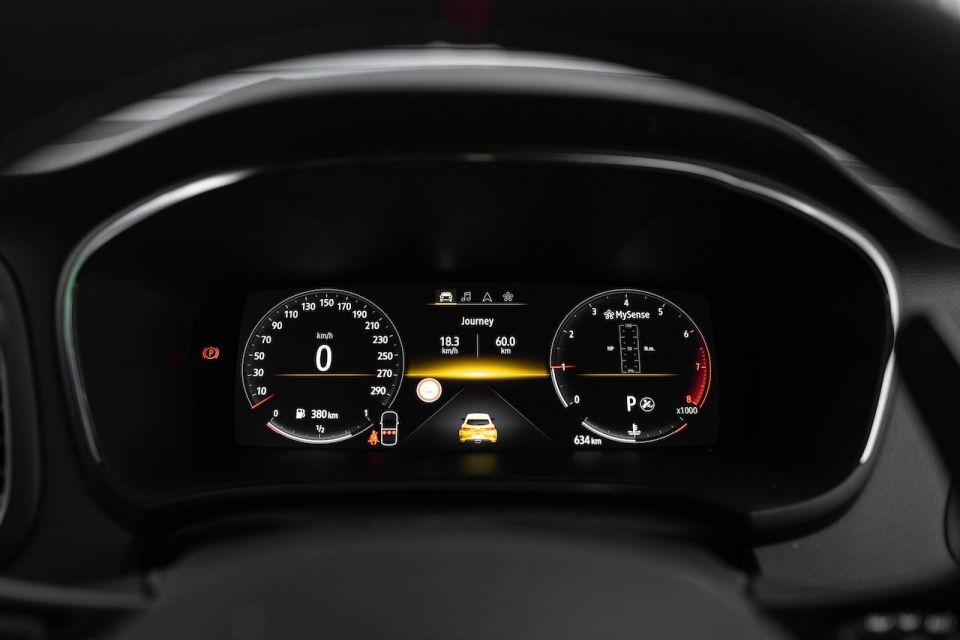
I’m not really a fan of the faux-carbon fibre vinyl on the door trims – more Alcantara would have looked more the part for this final edition.
At eye level, the plastics are decent, but dip below and you’ll find the cheaper pockmarked variety that extends to the back of the front buckets. Again, it’s the last of the lineage and Renault is asking top dollar for the Ultime – and it’s these smaller trim bits that might irk some prospects.
Nevertheless, all the important bits are done right. The pedal set is polished stainless with plenty of rubber dots for grip, and the perfectly sized steering wheel rim in combination Alcantara/leather is nicely tactile and features the Renault Sport logo in the same Liquid Yellow.
The column-mounted paddle shifters are an odd shape and really only extend upwards from the centre spokes, making manual shifting slightly awkward at times. Perhaps that’s just me being idiosyncratic but I found it cumbersome more often than not, given I like to use the manual shift option.
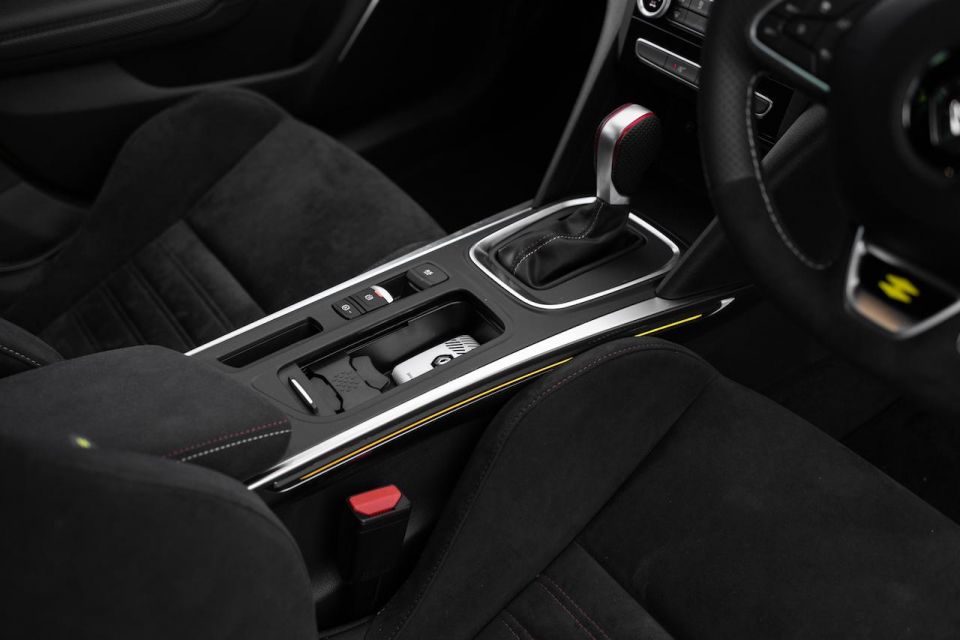
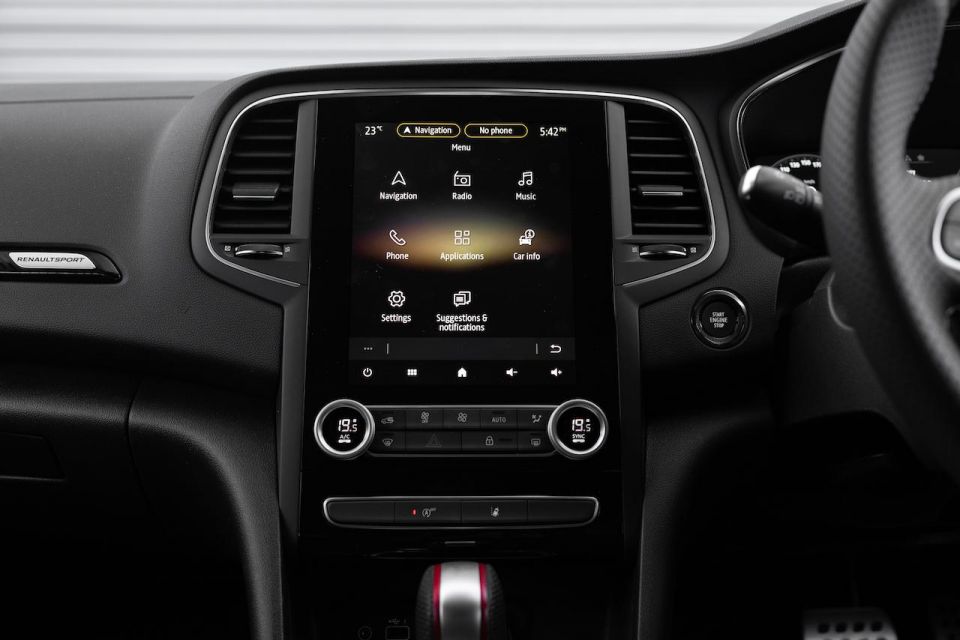
While the chunky metal transmission selector is throwback from Megane’s earliest days, I genuinely enjoy the intuitive nature of grabbing the stick, if you will, as old-school as that might be these days with the global EV shift.
Renault has done its best to keep up with its rivals on the technology front, with a digital driver’s display and a portrait-style infotainment touchscreen that meets most needs with good clarity, colour, responsiveness, and thankfully Apple CarPlay.
There are also plenty of USB-A ports for both seat rows, along with rear air vents, cupholders, armrest (in Alcantara) and adequate rear legroom for outer-seat passengers. Unfortunately, the middle-seat passenger in the rear is robbed of both under-thigh support and foot space.
For kids, there are two ISOFIX points for the outboard seats, as well as three top-tether anchor points.
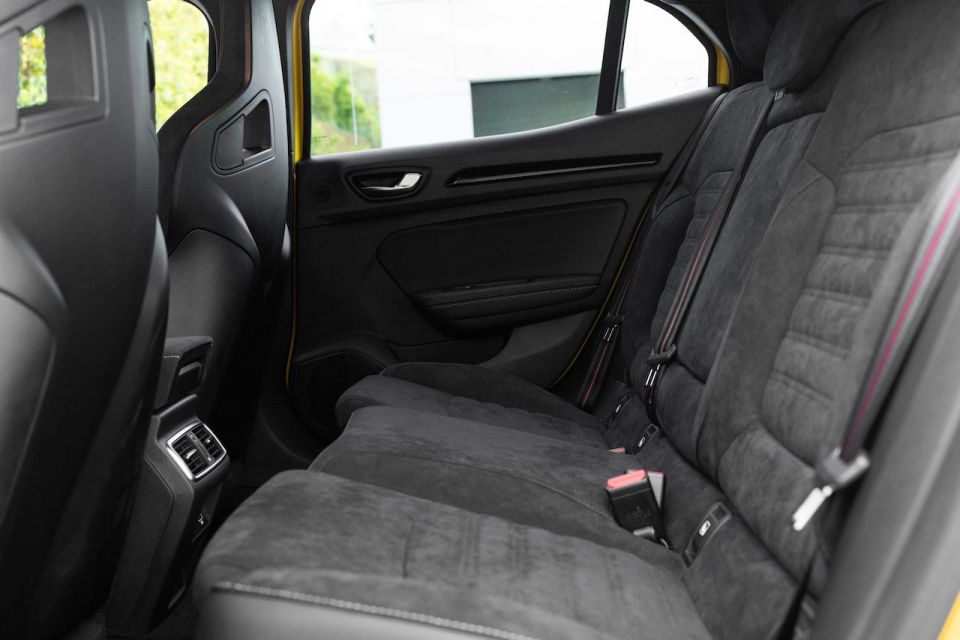

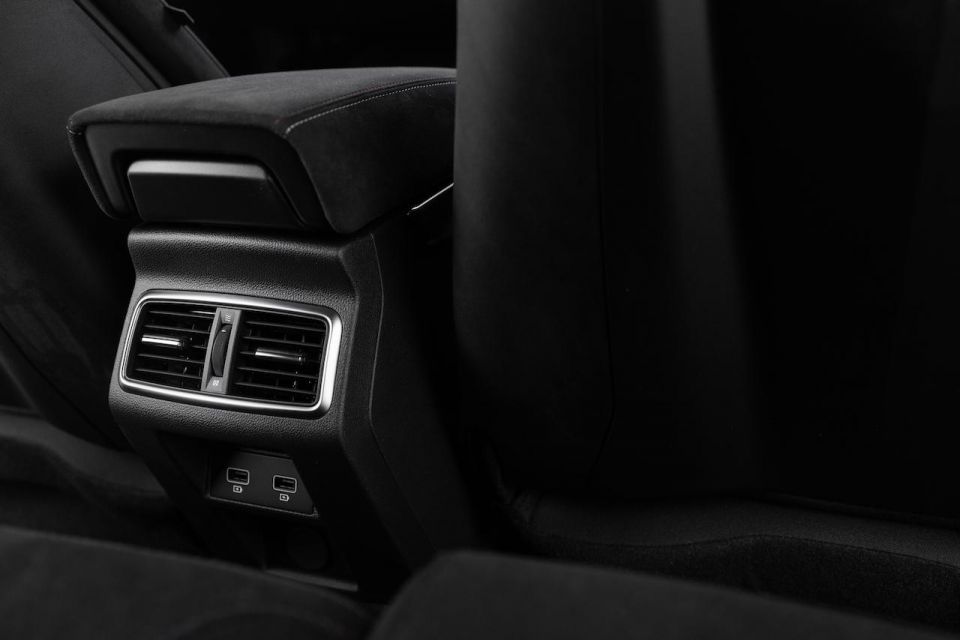
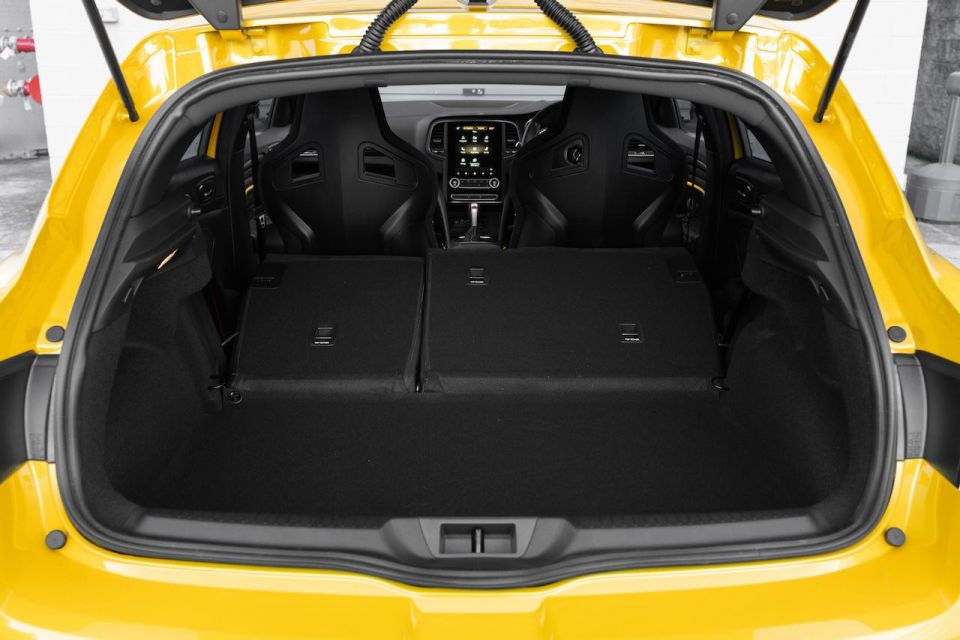
In the boot you’ll find a commendable 434 litres of space thanks to its significant floor depth. There’s no spare tyre or space saver, just a bottle of goo and a small electric compressor.
The rear seats are 60/40 split fold but folding both sides still leave a significant lip and they don’t exactly fold flat for easy loading of longer gear.
It’s the same powertrain as the Megane R.S. Trophy – a turbocharged 1.8-litre turbocharged four-cylinder petrol engine making 221kW of power at 6000rpm, and 420Nm (400Nm for the manual) peaking at 3200rpm.
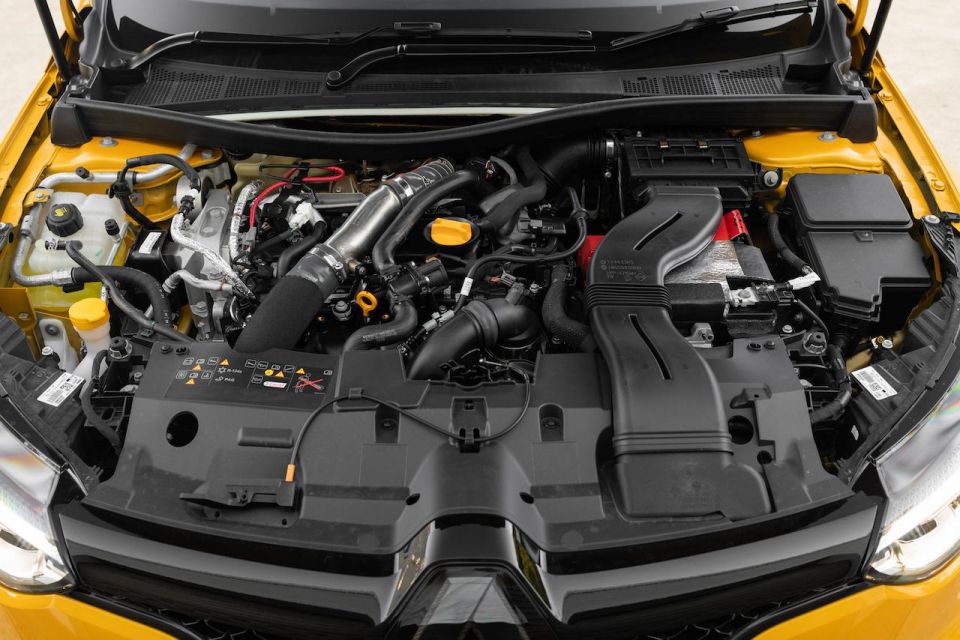
Both dual-clutch and manual versions of the Ultime use six-speed transmissions, and claim the same 0-100km/h sprint time of 5.7 seconds due to the differing kerb weights between the two – 1433kg for the auto and 1420kg for the stick shift.
The dual-clutch version also benefits from electronic launch control.
It’s solid grunt compared with the likes of rivals such as the Hyundai i30 N (hatch or sedan), and its 2.0-litre turbocharged four-pot making 206kW/392Nm.
There’s a 50L fuel tank requiring 98 RON, and the heavier dual-clutch variant is slightly thirstier using 8.3L/100km, while the lighter manual claims 8.0L/100km.
Drive it for pure pleasure though, and fuel consumption will rise sharply to 12L/100km plus at times. And given its rather short gearing and six-speed transmission, it can be less economical than some on the highway – all of this depends on your own driving style.
Underneath the Megane R.S. Ultime is the same heavily honed ‘Cup’ chassis from the Trophy, as well as Renault Sport’s four-wheel steering system and a Torsen limited-slip front differential for maximum adhesion with those sticky Bridgestone tyres.
There’s good stopping power, courtesy of beefed-up brakes by Brembo with slotted rotors. From its earliest iteration, the Megane R.S. has been equipped with outstanding stoppers.
No question this is a hot hatch that delivers loads of genuine feedback from the very moment you sink into those quite outstanding Recaro buckets that wrap you up nice and tight – you won’t move a millimetre in the most demanding of corners.
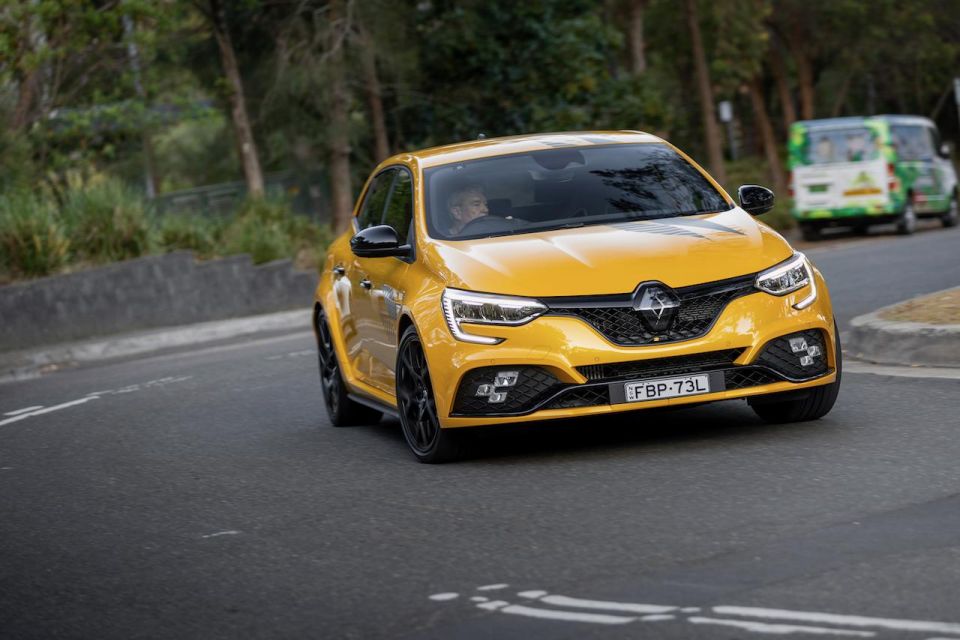
Once you’re on the move, there’s plenty of poke to excite despite being down on displacement compared with its larger 2.0-litre rivals. Regardless, the Megane R.S. Ultime still delivers solid punch throughout the entire rev range.
There’s plenty of cabin noise from the engine and short-geared DCT transmission, but it’s that same visceral experience that makes this special variant such a hoot to pilot.
Truth is, it’s no longer as quick as its more modern hot hatch rivals, at least out of the blocks, but it’s in the handling department where this sharply tuned Renault delivers its knockout punch.
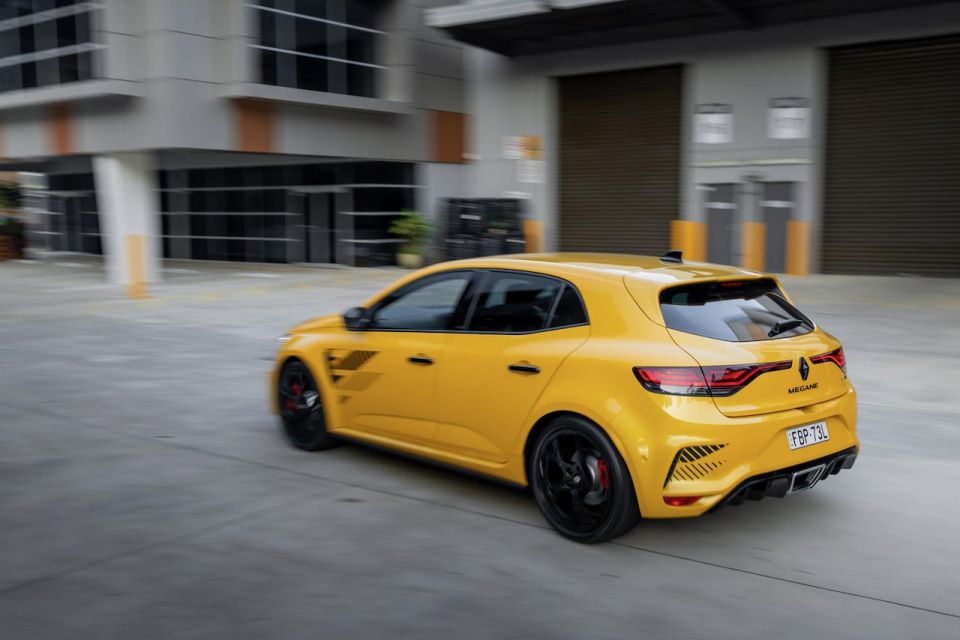
When Renault first introduced its four-wheel steering on Megane R.S. variants there were some amongst the press who didn’t warm to it – sighting irregularities in steering calibration and feel.
But, hardcore runs in Victoria’s high country revealed a cat-like ability to out hustle the very best hot hatches. Nothing has changed in that regard.
It’s a firm ride with the stiffened Cup suspension setup but on the plus side, it feels properly planted and able to make very quick directional changes thanks in part to that same four-wheel steering which also requires minimal steering input from the driver – even in the hairpins.
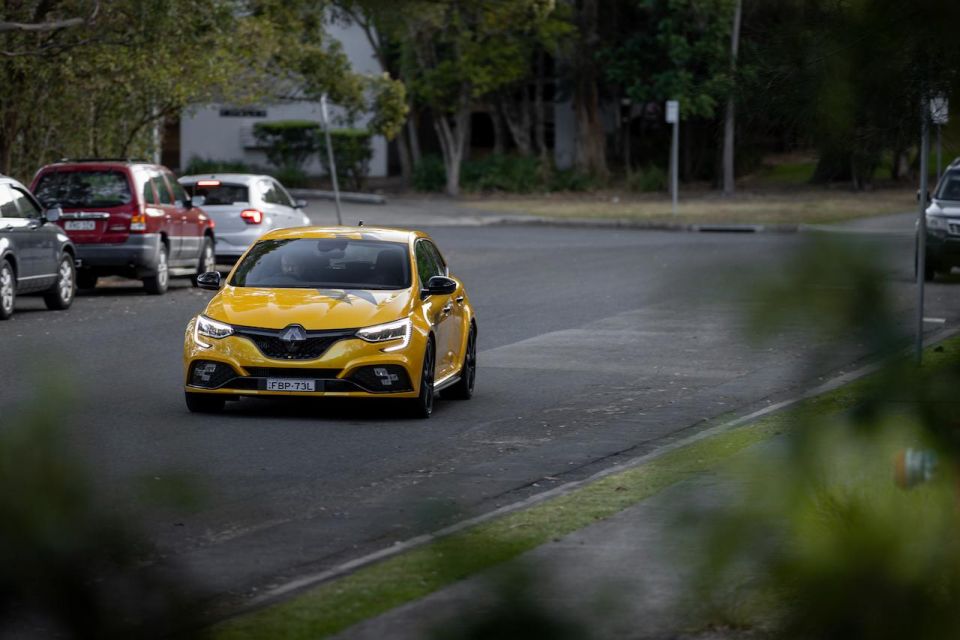
Grip levels are really quite uncanny, no matter how enthusiastic you might be. At times I found myself trying to catch it out. Not a chance.
Add to that the pops and crackles from its diminutive four-pot (in Sport of course) which give it a decently loud voice, along with serious mid-range go, and you’ve got one of the all-time great hot hatch experiences that will inspire the search for as many bends as you can muster on your favourite less-trafficked road.
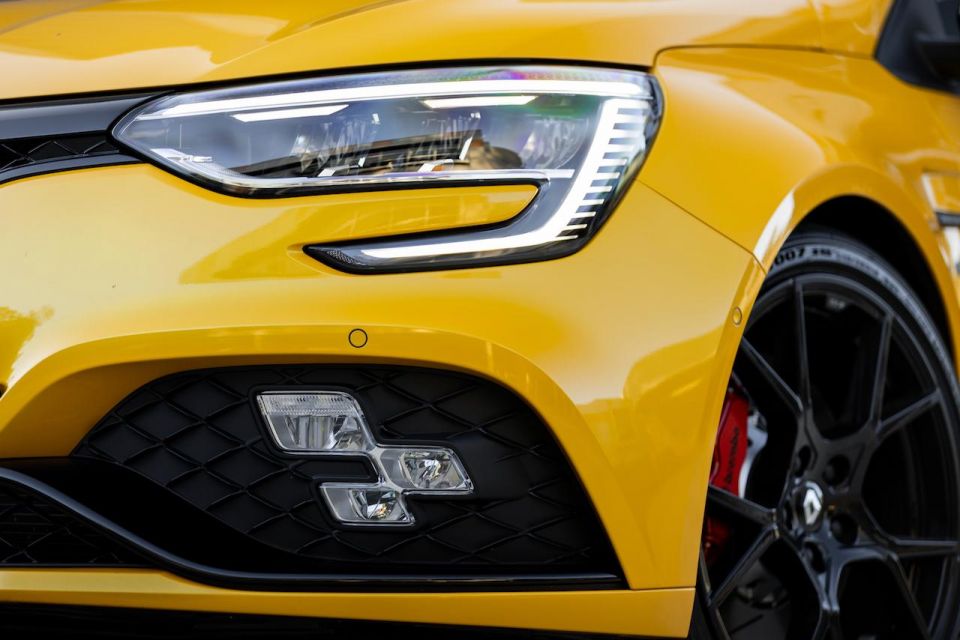

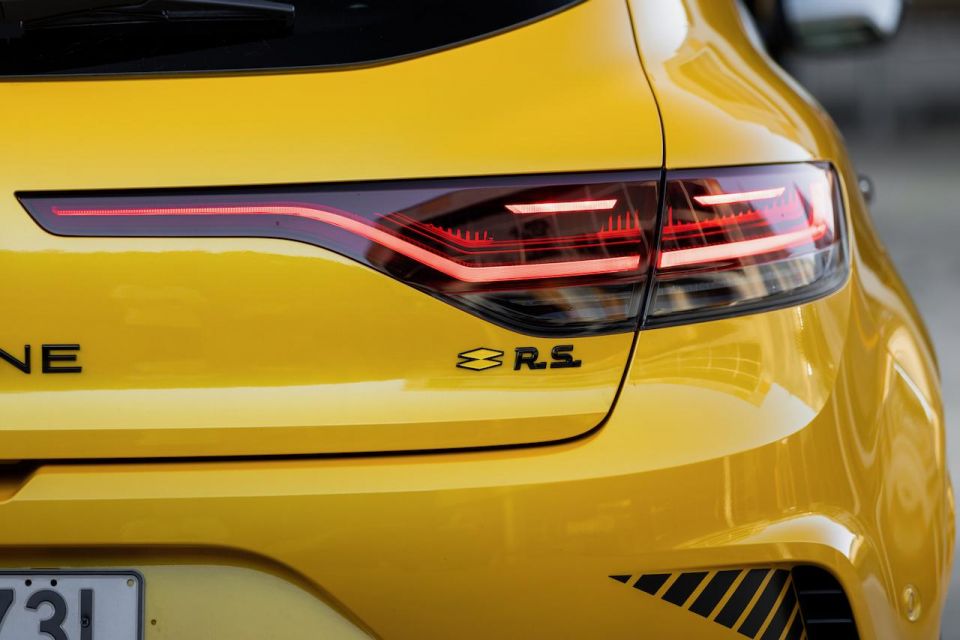
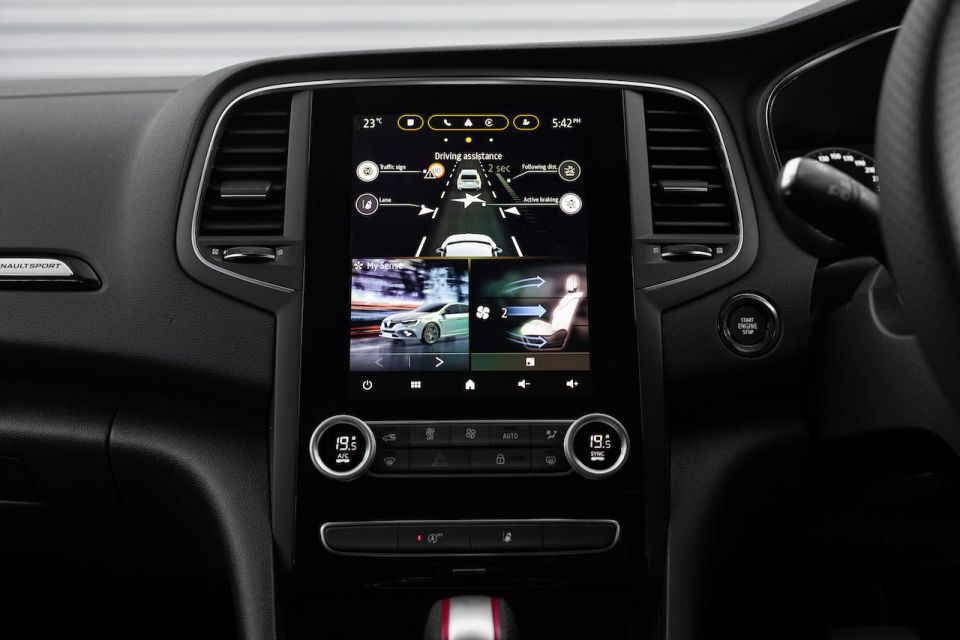
Megane R.S. Trophy highlights:
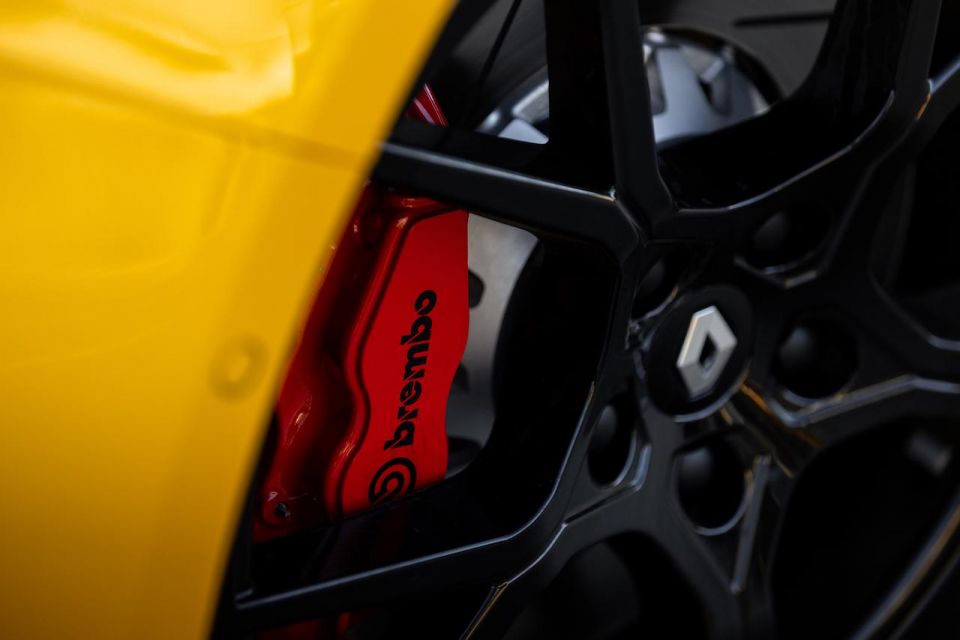

Where expert car reviews meet expert car buying – CarExpert gives you trusted advice, personalised service and real savings on your next new car.
R.S. Ultime adds:
Colours:
The Megane R.S. is unrated by ANCAP. Back in 2015, however, Euro NCAP gave the standard Megane five stars.
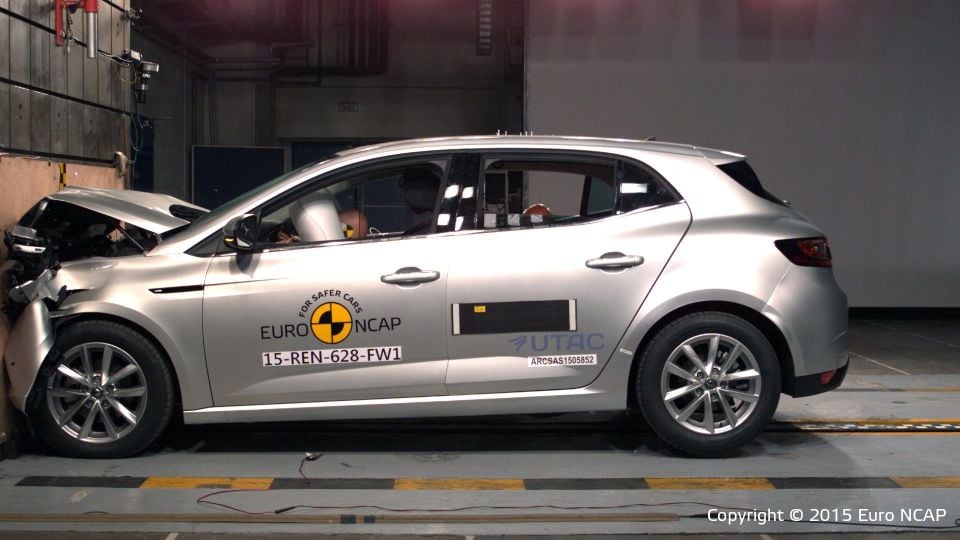
Standard safety features include:
The R.S. Ultime is backed by Renault’s five-year, unlimited-kilometre warranty.
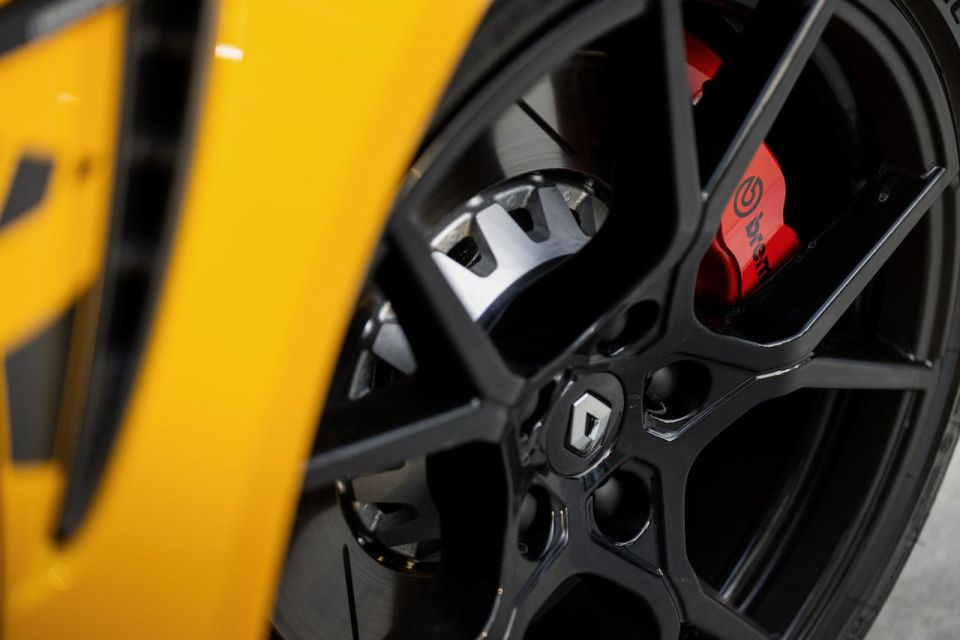
There’s also five years of roadside assistance, and five years of capped-price servicing totalling $2645.
In years to come, it’s likely any iteration of the Renault Megane R.S. will gain collectable or must-have status, especially as the world fast-tracks towards an all-electric future.

But the R.S. Ultime will be just that much more special – decreed by its limited build numbers alone, never mind the lightweight wheels, sticky tyres and those epic Alcantara-wrapped Recaro pews.
Even in its final iteration, the Renault Megane R.S. is still a car that can put a broad smile on the face of the most discerning enthusiast, and for that it deserves Hall of Fame status.
Click the images for the full gallery
BUY: Renault Megane R.S. MORE: Everything Renault Megane R.S.
Where expert car reviews meet expert car buying – CarExpert gives you trusted advice, personalised service and real savings on your next new car.


Matt Campbell
6 Days Ago


James Wong
5 Days Ago


Max Davies
3 Days Ago


Josh Nevett
2 Days Ago


Josh Nevett
2 Days Ago


Paul Maric
17 Hours Ago